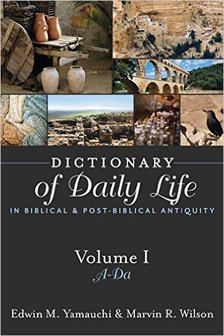Excerpts from:
|
Edwin M. Yamauchi was born in Hilo, Hawaii. He received his Ph.D. in Mediterranean Studies in 1964 at Brandeis University, taught in the History Department at Rutgers University until 1969, and at Miami University in Oxford, Ohio, until his retirement in 2005. He joined the ASA in 1962, served on the editorial board of its journal, and as its president in 1983. He has also served as the president of the Conference on Faith and History (1974-76), the Institute of Biblical Research (1986-89), the Evangelical Theological Society (2005-06), and the Near East Archaeological Society (2008-13).
His wife, Kimie, is also from Hawaii. They have a son Brian, who received his Ph.D. in Artificial Intelligence from Case-Western Reserve University and is a senior roboticist with I-Robot. Their daughter Haruko is a librarian at a City College in the Bronx. |




